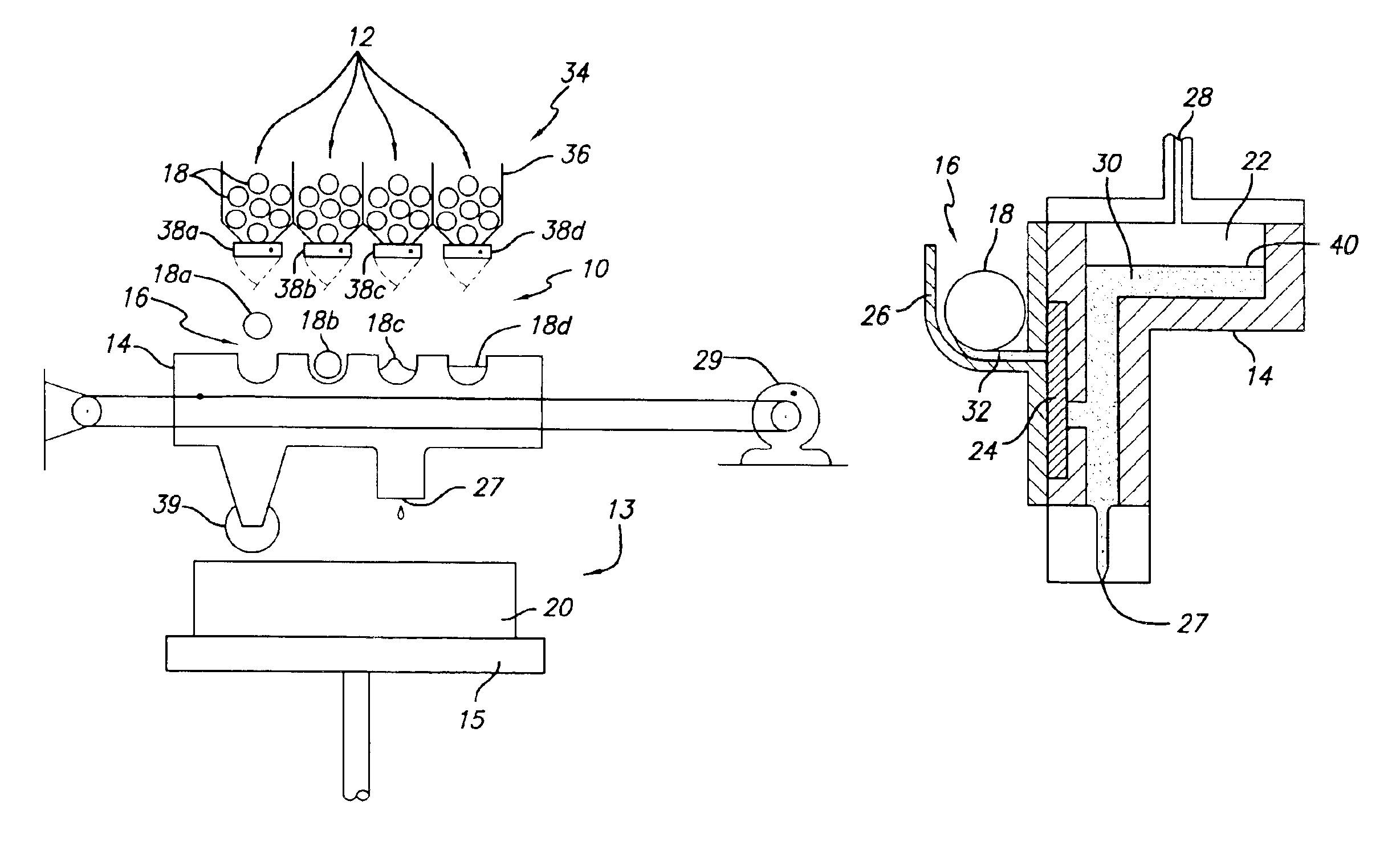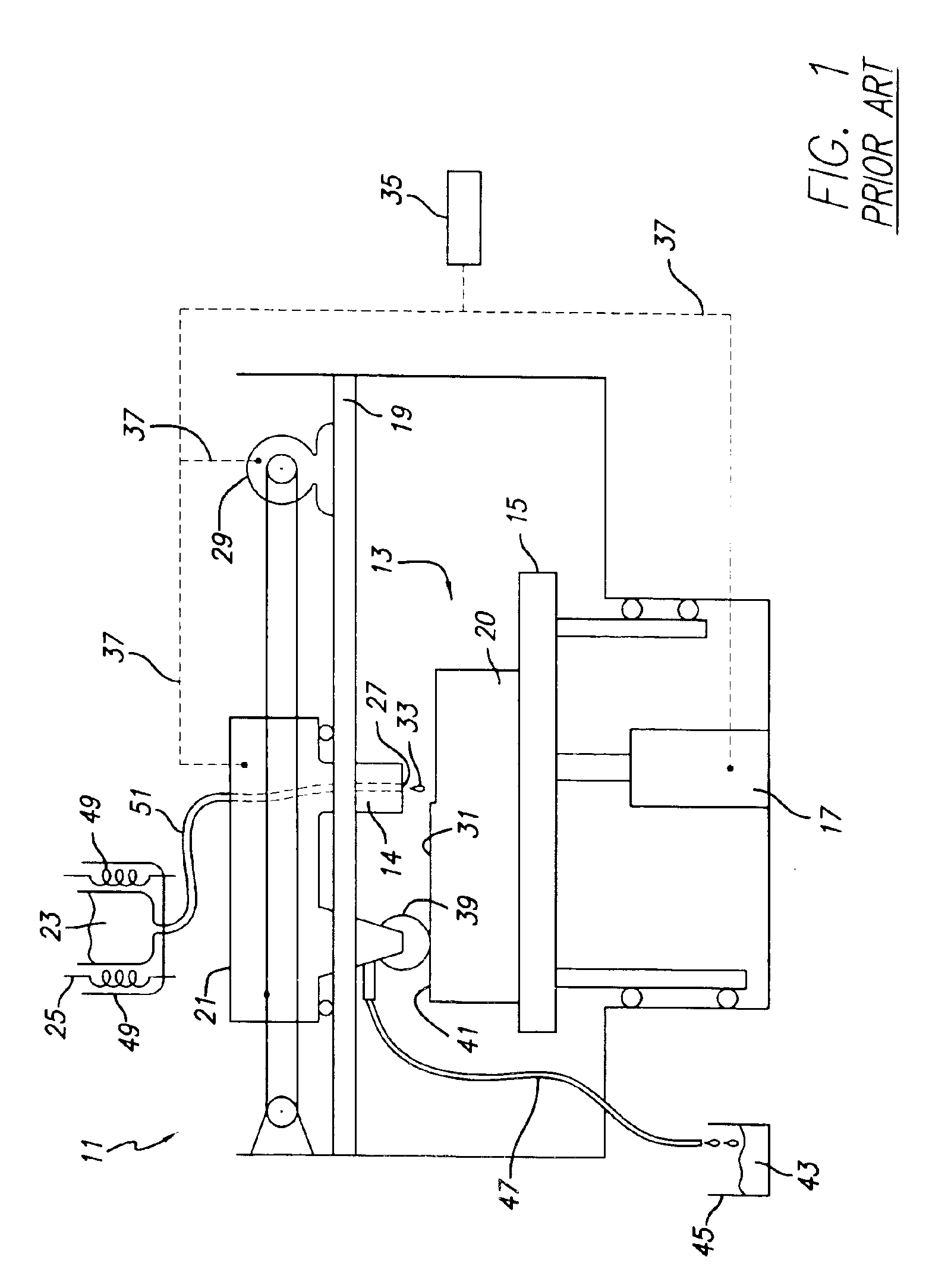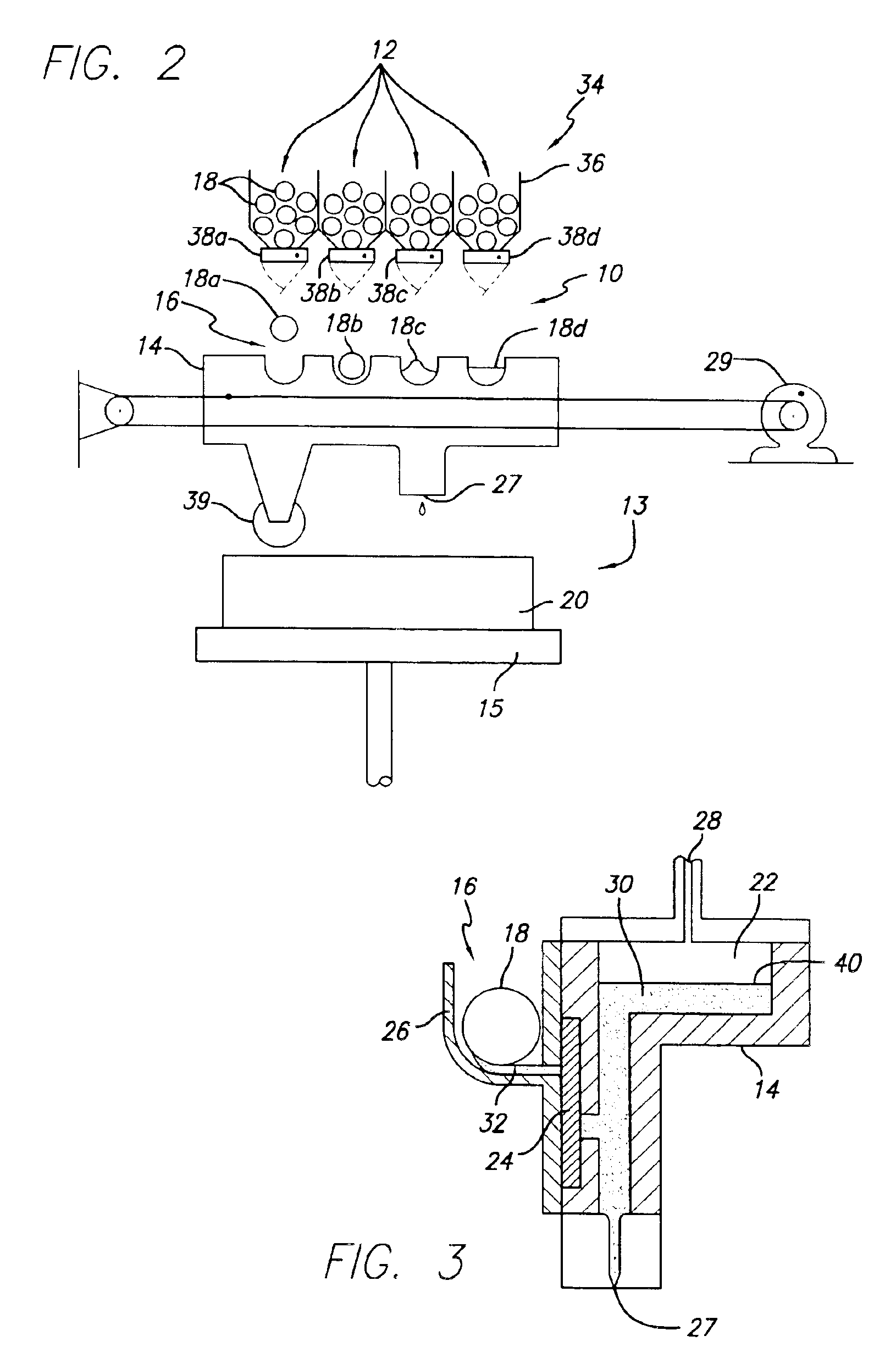Quantized feed system for solid freeform fabrication
a feed system and solid freeform technology, applied in additive manufacturing processes, manufacturing tools, coatings, etc., can solve the problems of shortening the time to develop prototype parts, sacrificing the ability to selectively disperse multiple colors, and quickly producing limited numbers of parts in rapid manufacturing processes. , to achieve the effect of substantially reducing the amount of radiant heat generated by an sdm apparatus
- Summary
- Abstract
- Description
- Claims
- Application Information
AI Technical Summary
Benefits of technology
Problems solved by technology
Method used
Image
Examples
Embodiment Construction
[0035]The present invention provides its benefits across a broad spectrum of SFF processes. While the description which follows hereinafter is meant to be representative of a number of such applications, it is not exhaustive. As will be understood, the basic apparatus and methods taught herein can be readily adapted to many uses. It is intended that this specification and the claims appended hereto be accorded a breadth in keeping with the scope and spirit of the invention being disclosed despite what might appear to be limiting language imposed by the requirements of referring to the specific examples disclosed.
[0036]While the present invention is applicable to all SFF techniques and objects made therefrom, the invention will be described with respect to solid deposition modeling utilizing a build material that is dispensed in a flowable state. However it is to be appreciated that the present invention can be implemented with any SFF technique utilizing a wide variety of build mate...
PUM
| Property | Measurement | Unit |
|---|---|---|
| spherical diameter | aaaaa | aaaaa |
| physical characteristic | aaaaa | aaaaa |
| colors | aaaaa | aaaaa |
Abstract
Description
Claims
Application Information
 Login to view more
Login to view more - R&D Engineer
- R&D Manager
- IP Professional
- Industry Leading Data Capabilities
- Powerful AI technology
- Patent DNA Extraction
Browse by: Latest US Patents, China's latest patents, Technical Efficacy Thesaurus, Application Domain, Technology Topic.
© 2024 PatSnap. All rights reserved.Legal|Privacy policy|Modern Slavery Act Transparency Statement|Sitemap



